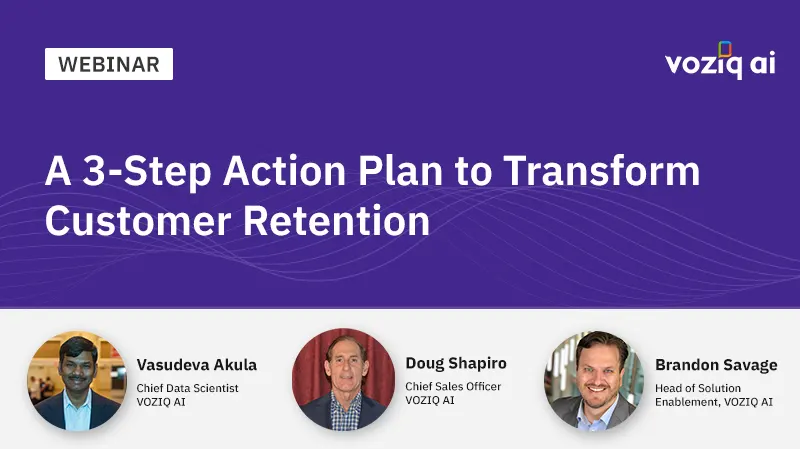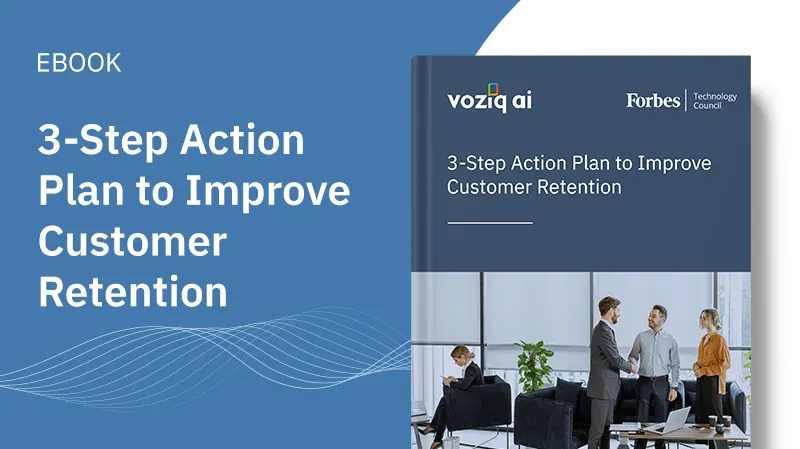Three Ways AI Can Protect Revenue And Bring Costs Down During Challenging Times

Three Ways AI Can Protect Revenue And Bring Costs Down During Challenging Times
The unprecedented disruption caused by the Covid-19 pandemic has significantly affected the way businesses across the world deliver products and services to their customers. As the economy gradually starts to open, the businesses that focus on understanding their customers and ensuring customer experience continuity will emerge from the crisis as winners.
However, constant priority changes, new policy implementation, workplace disruption and budget realignment could result in gaps in customer service. With increasing customer requests and increasing complexity of these requests, providing a seamless customer experience could become a tough task. Service costs are bound to increase, and poor customer experience could lead to attrition, thereby posing high revenue risk as well.
In such a situation, we have found that AI can assist in protecting business revenue and bringing costs down by helping businesses to better understand their customers and then turn that understanding into personalized, proactive engagement.
The Customer Experience Conundrum Is Leading To Revenue Risk With High Costs To Serve
The following scenarios have become quite common across industries in the last few months:
- Companies have experienced a huge increase in customer queries since the onset of the pandemic.
- Unfortunately, companies’ ability to handle a sudden influx of requests has been affected due to lockdowns.
- Reps are facing the challenge of addressing customer issues that they feel are more difficult in nature (e.g., financial hardship-related calls).
- This has led to higher escalations and more redirects/call transfers, resulting in higher service costs.
- Customers are also putting in greater effort to resolve their issues.
Converting Crisis Into Opportunity By Reverse-Engineering The Customer Experience
Customer satisfaction, customer retention and cost to serve are three key KPIs that ultimately define the long-term profitability of any business. From our work, we have seen that the drivers of these KPIs are strongly interlinked.
For example, for one of our clients, “high effort” was a big driver of customer satisfaction; however, when we analyzed customer interactions using machine learning models, we saw some interesting patterns. “High effort” was driving retention as well as service costs. The models gave us a network graph of 20-plus drivers that were highly interconnected and were impacting all three KPIs, including some of the drivers themselves.
This insight forced the client to rearrange how their service and retention teams worked. Care and service channels were recognized as drivers of profitability, and increased effort was put into injecting predictive intelligence into each touch point to optimize the drivers.
An Integrated Approach To Protecting Revenue By Personalizing Delivery Of Customer Care
Based on an analysis of customer interactions, we divided all call topics and issues into three tiers:
- Simple issues: Repetitive, large call volume.
- Complex issues: Require assistance of skilled agents.
- Specialized service issues: Require personalized attention and out-of-the box service/offer management; often involve callbacks and multiple interactions.
Categorizing these issues into different tiers allowed for the creation of tier-specific strategies to integrate AI into day-to-day operations.
Three Predictive AI Solutions That Can Drive Cost Reduction With CX And Attrition Gains
1. AI: Virtual assist (customer assistance through virtual agents for simple issues)
Although customer issues can be wide-ranging, many issues will be common among your customers. NLP tools can analyze call notes to identify the simplest and most common issues.
These can be tackled by blending digital and call center channels and driving self-service usage for common queries.
Another way of tackling common topics would be to use virtual agents or chatbots, built using AI technology, that offer customers instant, on-demand service. These technologies provide automated support and deliver a conversational experience.
According to IBM, businesses can reduce customer service costs by up to 30% by implementing such solutions.
2. AI: Human assist (customer assistance through specialist agents for complex issues)
A database of customer context insights can be plugged into care flow through IVR to intercept complex calls and route them to the agents who are trained to resolve the identified issues.
This avoids long wait times, clueless agents, multiple transfers and repeat calls — all of which adversely affect customer satisfaction, retention risk and cost to serve.
3. AI: Screen assist (Agent assistance through AI-powered guidance screens)
Not only can customers use AI, but agents can use it as well to work smarter and more effectively by introducing predictive intelligence into every conversation. Businesses can arm their care agents with an at-a-glance view of customer health, context, history and next-best-step suggestions while the customer is on the call.
This is especially useful while dealing with an at-risk customer identified by ML models who has been routed to the retention specialist.
In this process, a significant amount of call time is saved. Because the agent is aware of the customer’s history, there is no need to reach out to an SME for consultation, and the customer quickly receives the right personalized offer.
Conclusion
The benefit of using predictive AI is that it allows you to uncover complex patterns that impact customer experience and revenue. Predictive AI also allows you to create tiered solutions based on customer issue complexity and to influence the efficiency of nearly all interactions in the call center every year. This approach can result in millions of dollars saved for financially stressed businesses in today’s challenging times by enabling them to address issues that affect CX, costs and revenue.
This article was originally published in Forbes.






